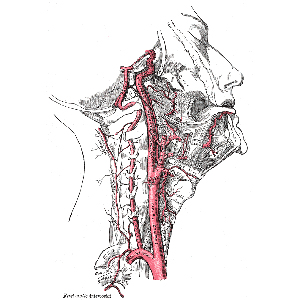Gender differences in the detection of carotid atherosclerosis: DUPLEX registry cross-sectional study results

Submitted: October 18, 2021
Accepted: January 22, 2022
Published: February 7, 2022
Accepted: January 22, 2022
Abstract Views: 1238
PDF: 552
Publisher's note
All claims expressed in this article are solely those of the authors and do not necessarily represent those of their affiliated organizations, or those of the publisher, the editors and the reviewers. Any product that may be evaluated in this article or claim that may be made by its manufacturer is not guaranteed or endorsed by the publisher.
All claims expressed in this article are solely those of the authors and do not necessarily represent those of their affiliated organizations, or those of the publisher, the editors and the reviewers. Any product that may be evaluated in this article or claim that may be made by its manufacturer is not guaranteed or endorsed by the publisher.
Similar Articles
- Pompilio Faggiano, Francesco Fattirolli, Anna Frisinghelli, Lucrezia Piccioli, Nicolò Dasseni, Maria Vittoria Silverii, Laura Albricci, Giuseppe D'Ambrosio, Rosaria Garrì, Luigi Esposito, Francesco Giallauria, Secondary prevention advices after cardiovascular index event: From drug prescription to risk factors control in real world practice , Monaldi Archives for Chest Disease: Vol. 89 No. 2 (2019)
- Zeynep Çınar, Eda Macit Aydın, Nurgul Naurzvai, Ayshan Mammadova, Sümeyye Kodalak, Aygül Abbasova, Gül Gürsel, Impact of neurological problems on mechanical ventilation and intensive care unit outcomes in pulmonary intensive care unit patients: a retrospective analysis of a single-center cohort , Monaldi Archives for Chest Disease: Vol. 94 No. 1 (2024)
- Gian Francesco Mureddu, Cesare Greco, Stefano Rosato, Paola D'Errigo, Leonardo De Luca, Gabriella Badoni, Pompilio Faggiano, Fulvia Seccareccia, High thrombotic risk increases adverse clinical events up to 5 years after acute myocardial infarction. A nationwide retrospective cohort study , Monaldi Archives for Chest Disease: Vol. 89 No. 3 (2019)
- Madoka Ito, Naoto Ishimaru, Toshio Shimokawa, Yoshiyuki Kizawa, Risk factors for mortality in aspiration pneumonia: a single-center retrospective observational study , Monaldi Archives for Chest Disease: Vol. 93 No. 3 (2023)
- Soibam Pahel Meitei, Sudheer Tale, Arjun Kumar Negi, Ruchi Dua, Rohit Walia, Sudhir Saxena, Prevalence and characteristics of venous thromboembolism in severe exacerbation of chronic obstructive pulmonary disease in a tertiary care hospital in India , Monaldi Archives for Chest Disease: Vol. 91 No. 4 (2021)
- Giuseppe Patti, Ludmilla Mantione, Edoardo Bressi, Antonio Bisignani, Efficacy and safety of oral anticoagulant therapy in frail patients with atrial fibrillation , Monaldi Archives for Chest Disease: Vol. 88 No. 2 (2018)
- Alfredo Copertaro, Massimo Bracci, Mariella Barbaresi, Assessment of plasma homocysteine levels in shift healthcare workers , Monaldi Archives for Chest Disease: Vol. 70 No. 1 (2008): Cardiac series
- G. Callegari, A.M. D'Armini, P. Baiardi, M. Viganò, C. Fracchia, Predictors of mortality in patients with Eisenmenger syndrome and admission to the lung transplantation waiting list , Monaldi Archives for Chest Disease: Vol. 61 No. 4 (2004): Pulmonary series
- Fabio Maresca, Greta Luana D’Ascoli, Francesca Ziviello, Gianluca Petrillo, Vito Di Palma, Angelo Russo, Alessandra Grieco, Plinio Cirillo, Obesity and ischemic heart disease. Is there a link between wellness’ diseases? , Monaldi Archives for Chest Disease: Vol. 76 No. 1 (2011): Cardiac series
- M. Bartal, COPD and tobacco smoke , Monaldi Archives for Chest Disease: Vol. 63 No. 4 (2005): Pulmonary series
<< < 7 8 9 10 11 12 13 14 15 16 > >>
You may also start an advanced similarity search for this article.

 https://doi.org/10.4081/monaldi.2022.2128
https://doi.org/10.4081/monaldi.2022.2128





